
I've been thinking lately about plants of the past: in particular, blooming plants no longer in my garden. Some were species I planted, others were presumably planted by the previous owners decades ago, and still others were natives growing in the woodland.
I glanced through old photos, and while there weren't as many "disappearances" as I expected, some are particularly missed like the Bloodroot (Sanguinaria canadensis) in the photo above. For most of the years we've lived here, I found patches of Bloodroot each spring. A beautiful native ephemeral, it only blooms for one to two days. The foliage remains throughout the spring, and the plant reappears the next year. Why is it missing?
While I don't truly know why any of these plants disappeared from the property, I'll try to guess. In the case of the Bloodroot, perhaps it's the changing conditions of several years of floods followed by several years of drought...or other factors relating to climate change. Or, perhaps the fox (and family?) that now lives in the back woodland dug around in the limited spots where the plant was located.
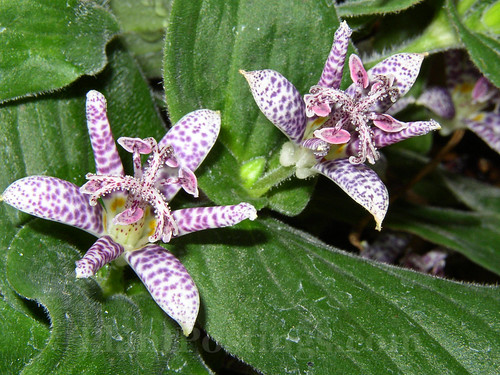
Another plant that's gone is the Toad Lily (Tricyrtis hirta). Unfortunately, this plant is long gone from my garden. It's a fun little bloomer, but it only lasted a couple of years. Either it didn't like the growing conditions (although they matched its described preferences), or the rabbits ate it, which seems more likely since rabbit foraging is a noted issue.
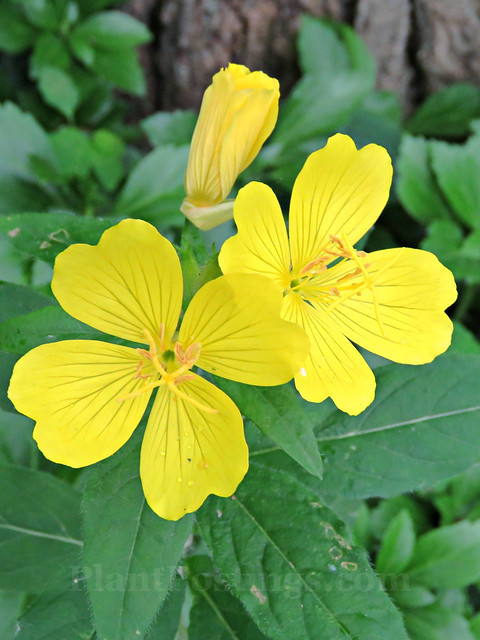
Meadow Evening Primrose (Oenothera pilosella) bloomed here off and on for two decades. I'm assuming the previous owners planted it, although it is native so it might have occurred naturally. I haven't found it in its "spot" for several years now. Such beautiful bright yellow flowers: I miss them. I really have no idea why this plant is gone.
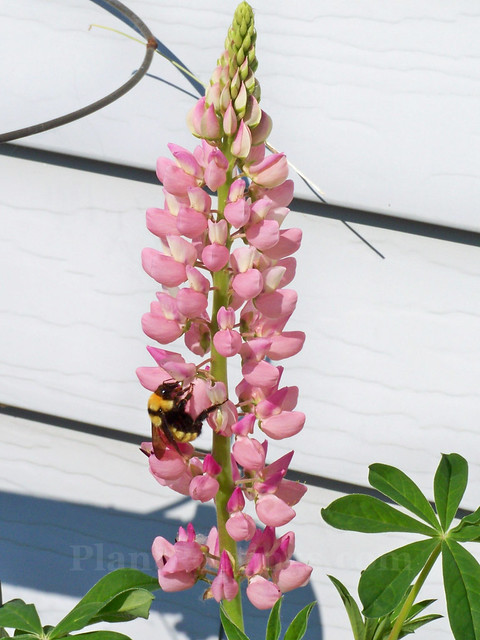
I planted Russell Lupines (Lupinus polyphyllus) in the side garden many years ago. They're stately, tall bloomers, regularly visited by pollinators, and they're great cut flowers. I don't remember when they disappeared, but they are listed as short-lived perennials, so perhaps I should plant more.
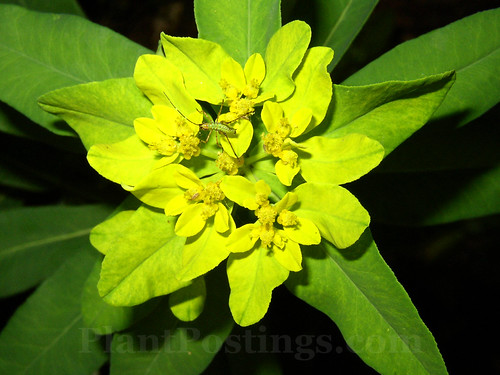
Cushion Spurge (Euphorbia polychroma), planted by the previous owners, was a reliable bloomer in my garden from the first growing season here (2000) until a couple of years ago. It's not native, but it's not invasive, and it certainly was a reliable stalwart for most of my time here. As with the Oenothera, I have no idea why this one disappeared. Rabbits leave it alone, and the fox doesn't hang out much in its open area of the garden. It's also drought-tolerant.
Finally, I truly miss this beautiful bloomer that graced the side fenced garden. I don't remember which Delphinium (D. elatum) hybrid it was, but what a stunner! Delphiniums are noted as short-lived perennials, too. I don't know if I'll plant them again in this garden, because the growing conditions have changed and other plants are in this spot. But, maybe...?
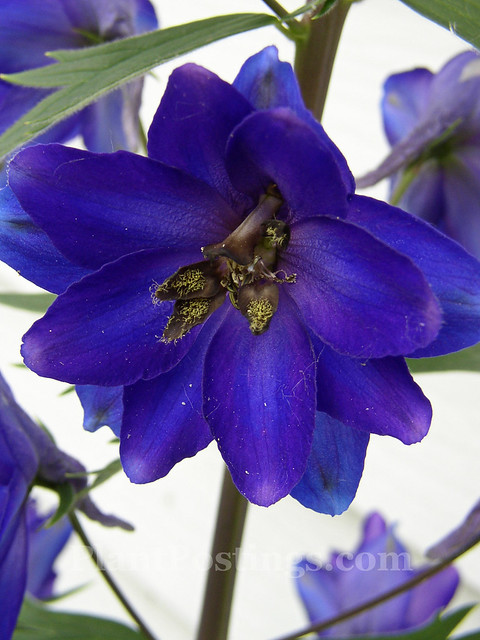
Hi Beth,
ReplyDeleteI enjoyed your post.
My grandpa loved Bloodroot, he would wait for it every Spring. When it bloomed he always shared it with me. It was his favorite early spring flower. He would look everyday for it, when it finally said "Hello Spring" he would give me a happy smile. You brought back memories for me. Thank you.
My Evening Primrose have not done as well as they have in the past. I do think it is because we have been so dry for several summers.
I had a lovely Delphinium, but it passed on. I miss it.
Thanks, Carla. I'm hoping that both the plants you mentioned might make a comeback...perhaps there are remnants that I just didn't see the past few years because of the groundcovers. Fingers crossed.
DeleteHi, Beth. I've lost a lot of plants, too. Most of them have been eaten by voles and deer.
ReplyDeleteYes, there have been many I've "fed" to the rabbits. Now I only plant rabbit-repellent plants or plants I can protect with fencing or screened protection.
DeletePlants are so fickle in their persistence. Loved this post.
ReplyDeleteLisa
Indeed. I guess none live forever, but it's especially tough with the ones that thrive for decades. Thanks. :)
DeleteI've lost a lot of plants over the years too. Often I find evidence of decline before the departures but some things truly just disappear. Given the evidence of gophers of late, they're probably at the top of my list of culprits for my own mysterious disappearances. In any case, it's worth trying a beloved plant again.
ReplyDeleteI didn't notice decline really with any of these, except maybe the Toad Lilies. But our winters and the extreme temperature swings--which have gotten more intense and dramatic--may have something to do with some of these disappearances, too. And you're right--I should try some of these plants again. :)
DeleteMy lupine grown from seed grew to a big plant, with lovely flowers, for just a few years, four or five at the peak. I find them easy to grow from seed, so I plant some every few years to replace the big ones.
ReplyDeleteYou're right--I need to try Lupines again. They're great cut flowers. I wish they were longer-lived, but I guess they're more like triennials or quadrennials. ;-)
DeleteBeautiful!
ReplyDeleteNow that you have me thinking about flowers that I have lost, I am making a list to try to find the bulbs, plants, or seeds again. The first on my list is Rosemary.
Have a great weekend!
Thanks. :) I need to do the same. Not all of these will be replaced, but a couple, at least. I hope to see the native wildflowers again on their own schedules.
DeleteI can see why you miss them--they are all lovely. Natives are extra special. To think they were growing for hundreds or thousands of years in the same area, and are present still, is food for contemplation.
ReplyDeleteYes, so true. Of course, there are many Sanguinarias and Oenotheras growing in the area. I'm just sad that they're gone from this property. But, fingers crossed, maybe they'll be back. :)
DeleteI'd probably be horrified at the number of plants I've lost over the years. I'm not in your area (or anywhere near it) but in my case I know that many of them have been wrong plant, wrong place, wrong soil. I'm learning though! But there's no doubt that climate is altering. Some plants cope with the changes, others can't. I think it could take some trial and error until we can find plants that will suit our changing gardens.
ReplyDeleteYes, I've had many of those situations, too. Most of the time, I could blame it on rabbits...they've eaten so many of the things I've planted over the years. In those cases, I either gave up on the plants or re-planted them with protective caging around them. Re: the wild plants...I'm hoping they'll come back. Good luck to you, too! :)
DeleteI love lupines, and also wish they'd last a little longer. I like the the idea of starting some from seed every couple years to keep up the supply! And I don't blame you for missing all of those beauties!
ReplyDeleteI might try more Lupines--either this summer or next summer. I'm limited with sun, and plans for this summer's sunny spots are crowded. But I love them!
DeleteI had the same experience but then I would also have spontaneous pop ups of new plants. Of course now I miss all my plants from Austin but have lots of photos.
ReplyDeleteOh yes, that happens here, too. Great idea for another blog post. Thank you! (I would miss your previous garden and plants, too. It was wonderful to tour it during the Austin Fling!)
DeleteInteresting that my bloodroot is also mostly gone. I have old pix of big patches. I recently heard a DNR guy mention we’ve had three historically wet years followed by three drought years. No wonder our plants are stressed.
ReplyDeleteAh, thanks for sharing that you've had a similar experience with the Bloodroot. Yes, the past several years have been tough on the plants. Maybe some will reappear if the conditions are right...until the next deluge or drought.
DeleteWhat a great subject for a post! It's definitely good to know other gardeners have disappearing plants too. Euphorbia polychroma is one of mine as well, it seems to be a very short lived plant.
ReplyDeleteThanks. I feel especially bad?/sad? about the ones that were here for so many years--presumably before we moved in more than two decades ago. Believe it or not, E. polychroma was one of them. :(
DeleteSuch wonderful plants I miss as well.
ReplyDeleteThe conditions are changing and our personal circumstances are changing. :)
DeleteToadlilies don’t last through the winter for me. Lupins only last a year or three, though they usually leave a seedling or two that turn out to be a poorer, washed out color. The only delphinium we get to last are the native D. trollifolium. The other types are 1-3 year max.
ReplyDeleteGood to know I'm not the only one. And the growing conditions seem to be changing faster here, as well.
DeleteI recently lost my garlic buchu. But I have a different buchu flourishing instead. Battling to retrieve my Cotoneaster bonsai ...
ReplyDelete